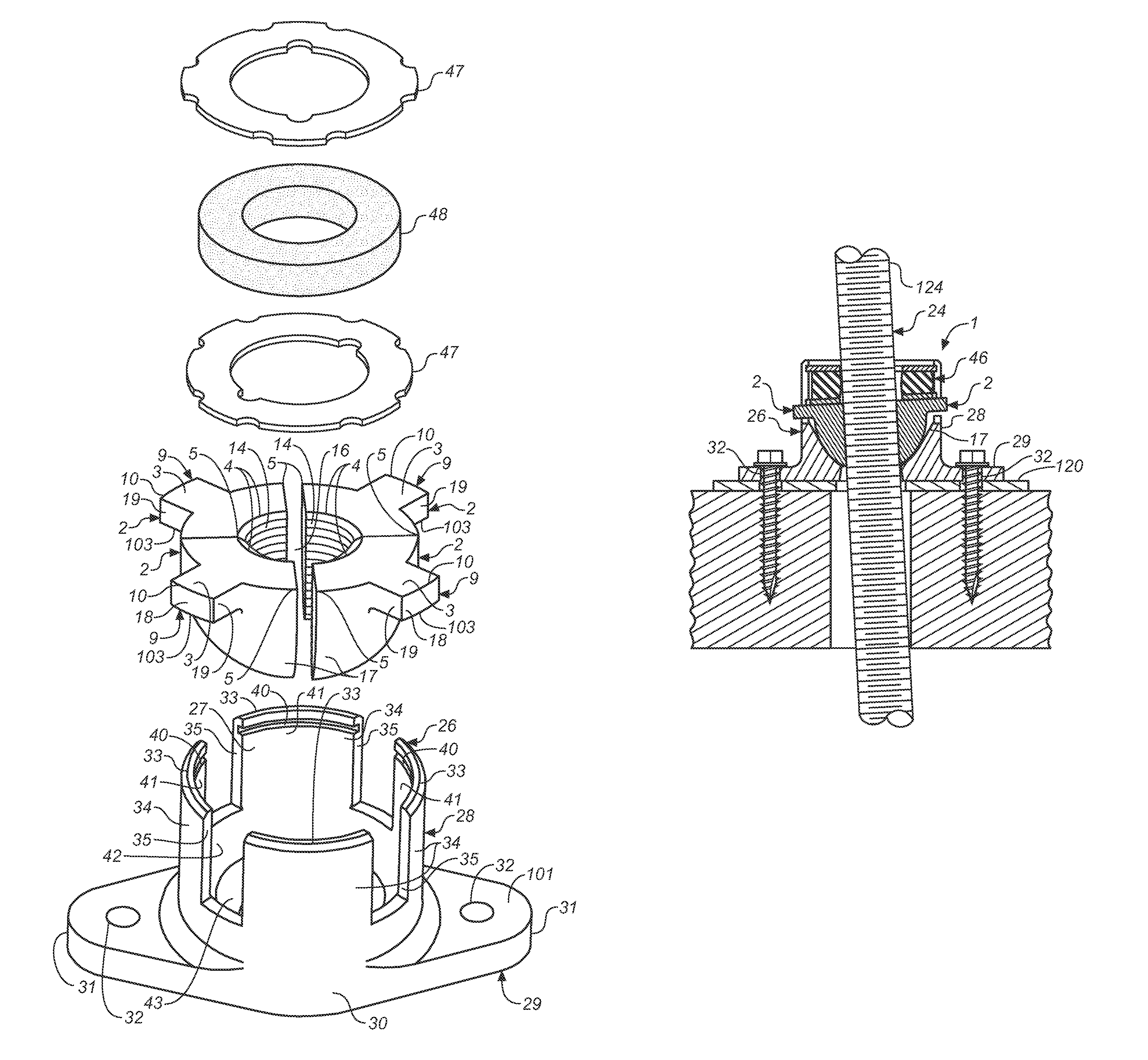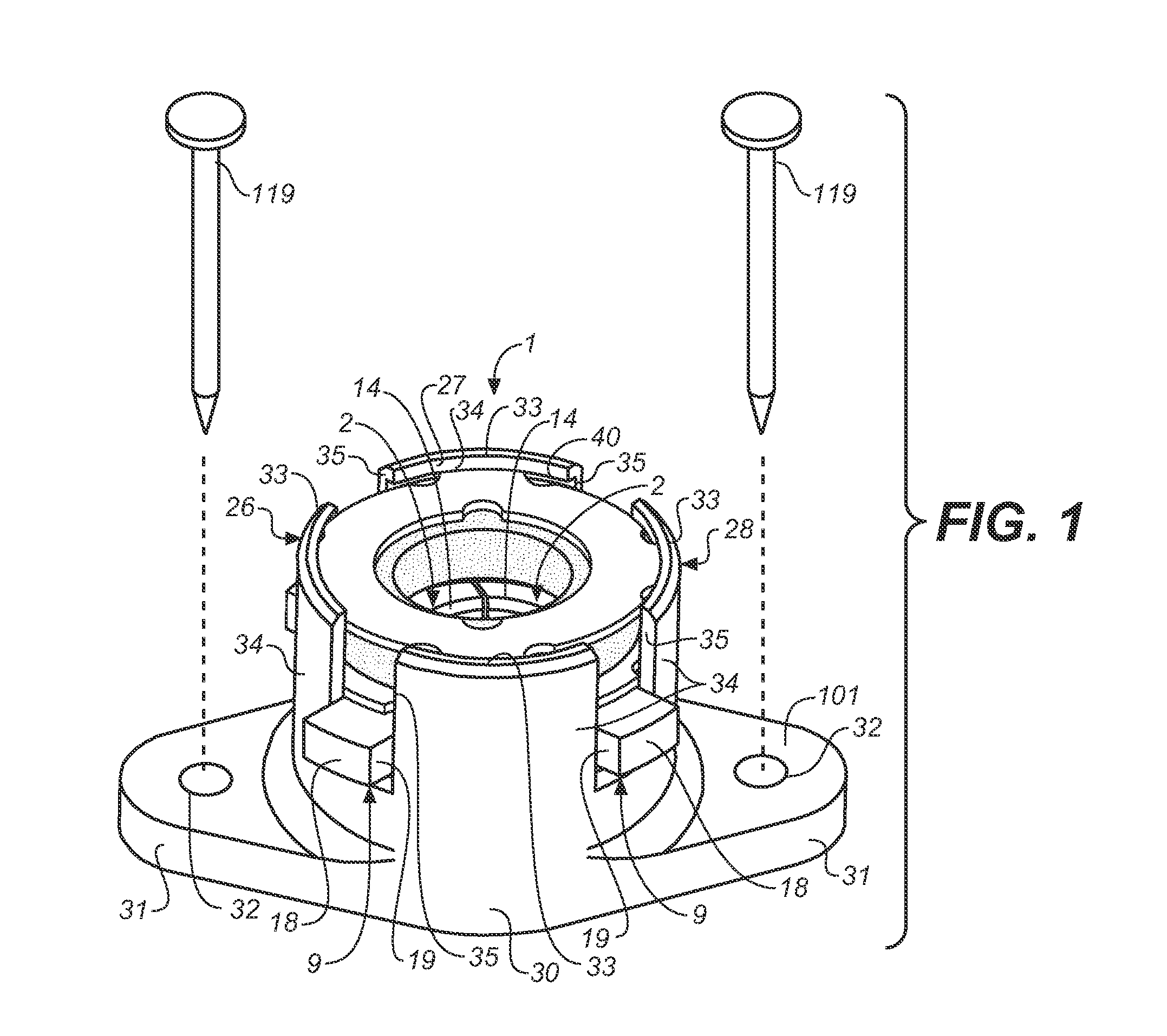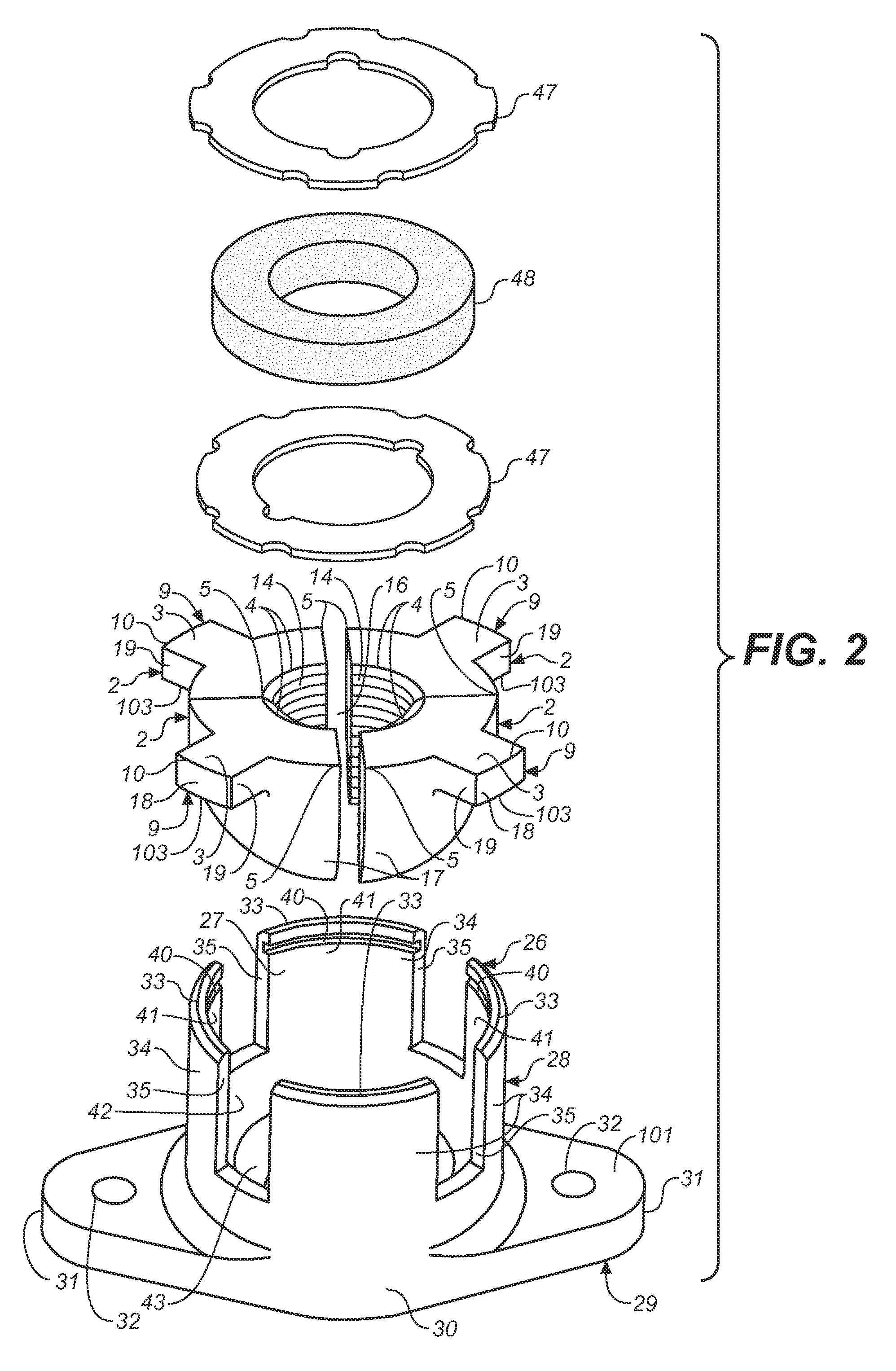Ratcheting take-up device
a ratcheting and take-up technology, applied in the direction of rod connections, screws, building repairs, etc., can solve the problems of lack of a means of compensating for slack that builds up, and achieve the effect of quick insertion and minimal risk of jamming the take-up devi
- Summary
- Abstract
- Description
- Claims
- Application Information
AI Technical Summary
Benefits of technology
Problems solved by technology
Method used
Image
Examples
Embodiment Construction
[0032]For clarity and convenience, the take-up device 1 of the current invention is described in a single, most common, orientation (except as noted otherwise) in which a top faces up and a bottom faces down. The take-up device 1 can, nevertheless, be installed in essentially any orientation, so that a top can face down or to the side and a bottom can face up or to the side.
[0033]As best shown in FIGS. 2 and 11, the take-up device 1 of the present invention preferably has four insert segments 2 arranged sectionally around an inner bore 16. Greater or lesser numbers of insert segments 2 are possible, but four is preferred. The insert segments 2 are designed to grasp a preferably vertical tie rod or threaded bolt 24. Preferably, vertical tie rod 24 is a least threaded where it is grasped by insert segments 2. Vertical tie rod 24 can be wholly threaded, partially threaded, or unthreaded, although if is unthreaded it is preferable to have a grooved surface that can mate with similar gro...
PUM
 Login to View More
Login to View More Abstract
Description
Claims
Application Information
 Login to View More
Login to View More - R&D
- Intellectual Property
- Life Sciences
- Materials
- Tech Scout
- Unparalleled Data Quality
- Higher Quality Content
- 60% Fewer Hallucinations
Browse by: Latest US Patents, China's latest patents, Technical Efficacy Thesaurus, Application Domain, Technology Topic, Popular Technical Reports.
© 2025 PatSnap. All rights reserved.Legal|Privacy policy|Modern Slavery Act Transparency Statement|Sitemap|About US| Contact US: help@patsnap.com



